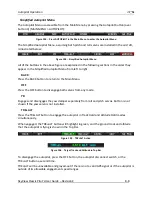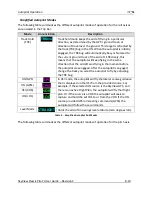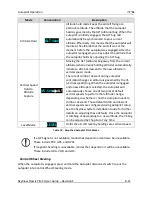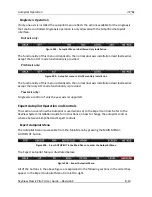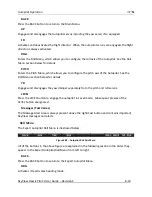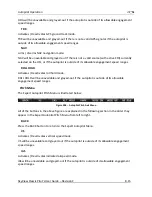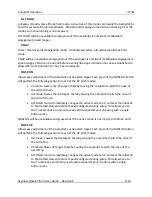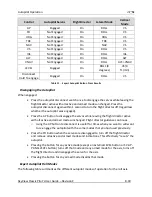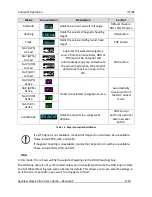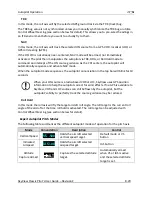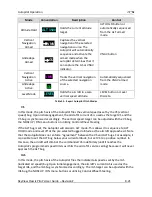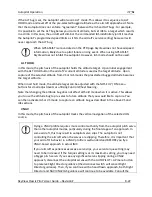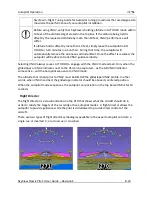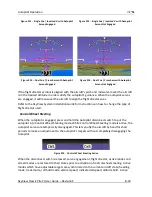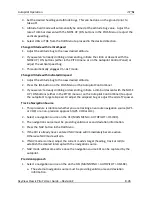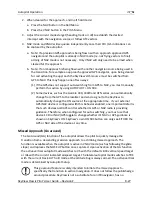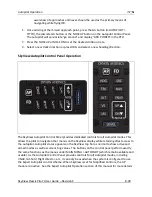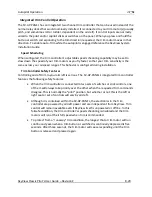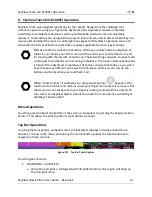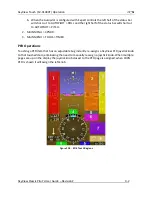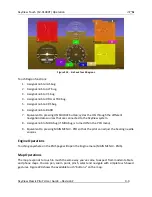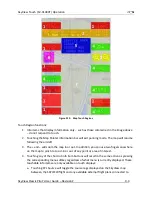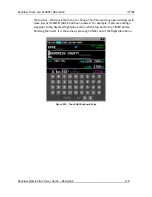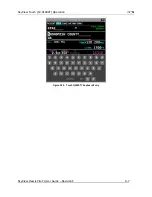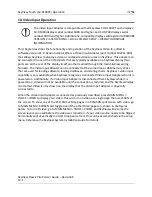
Autopilot Operation
SkyView Classic Pilot’s User Guide –
Revision Z
8-22
If the ALT bug is set, the Autopilot will also arm ALT mode. This allows it to sequence to ALT
HOLD mode and level off at the pre-selected bugged altitude as the aircraft approaches it. Note
that the Autopilot does not enforce “agreement” between the IAS and ALT bugs. For example,
it is possible to set the ALT bug below your current altitude, but set IAS to a target which results
in a climb. In this case, the aircraft will climb at the commanded IAS indefinitely (until it reaches
the Autopilot’s programmed speed limits as it hits the aircraft’s service ceiling) because it will
never approach the ALT bug.
When GPS ASSIST is annunciated on the PFD page SkyView does not have airspeed
information, likely due to a pitot failure or icing event. When using GPS ASSIST,
SkyView does not inhibit the autopilot. However, IAS mode should not be used.
ALT HOLD
In this mode, the pitch axis of the autopilot holds the altitude target. Upon initial engagement
with the ALT HOLD button the aircraft’s current altitude is used as the target altitude. Upon
capture of the selected altitude from VS or IAS modes the preselected bugged altitude becomes
the target altitude.
When in alt hold mode, the altitude target can be adjusted with the NOSE UP / DN menu
buttons for small adjustments or utilizing Control Wheel Steering.
Note that changing the altitude bug does not affect alt hold mode when it is active. This allows
you to use the altitude bug to pre-select a future altitude that you would like to capture. You
can then activate IAS or VS mode to capture an altitude bug as described in the above VS and
IAS sections.
VNAV
In this mode, the pitch axis of the autopilot tracks the vertical navigation of the selected HSI
source.
Flying a VNAV profile requires more control authority from the autopilot pitch servo
than other autopilot modes, particularly during the final stages of an approach. In
some aircraft, this may result in autopilot servo slips. The autopilot is not
controlling the aircraft when the servos are slipping. Therefore, it is important that
your aircraft’s behavior in a VNAV profile is well
-understood BEFORE you fly a
VNAV-based approach in actual IMC.
If your aircraft experiences excessive servo slips, your servo torque setting may
need to be increased. If the torque setting is at its maximum setting, you may need
a bigger pitch servo. If you see any significant servo slipping during a VNAV
approach, disconnect the autopilot servos with the AUTOPILOT > AP menu button
to preserve Flight Director guidance (the disconnect switch will cancel Flight
Director guidance). Then, if you continue with a hand-flown approach, both Flight
Director and NAV/VNAV/GS guidance will continue to be available. Consult the

